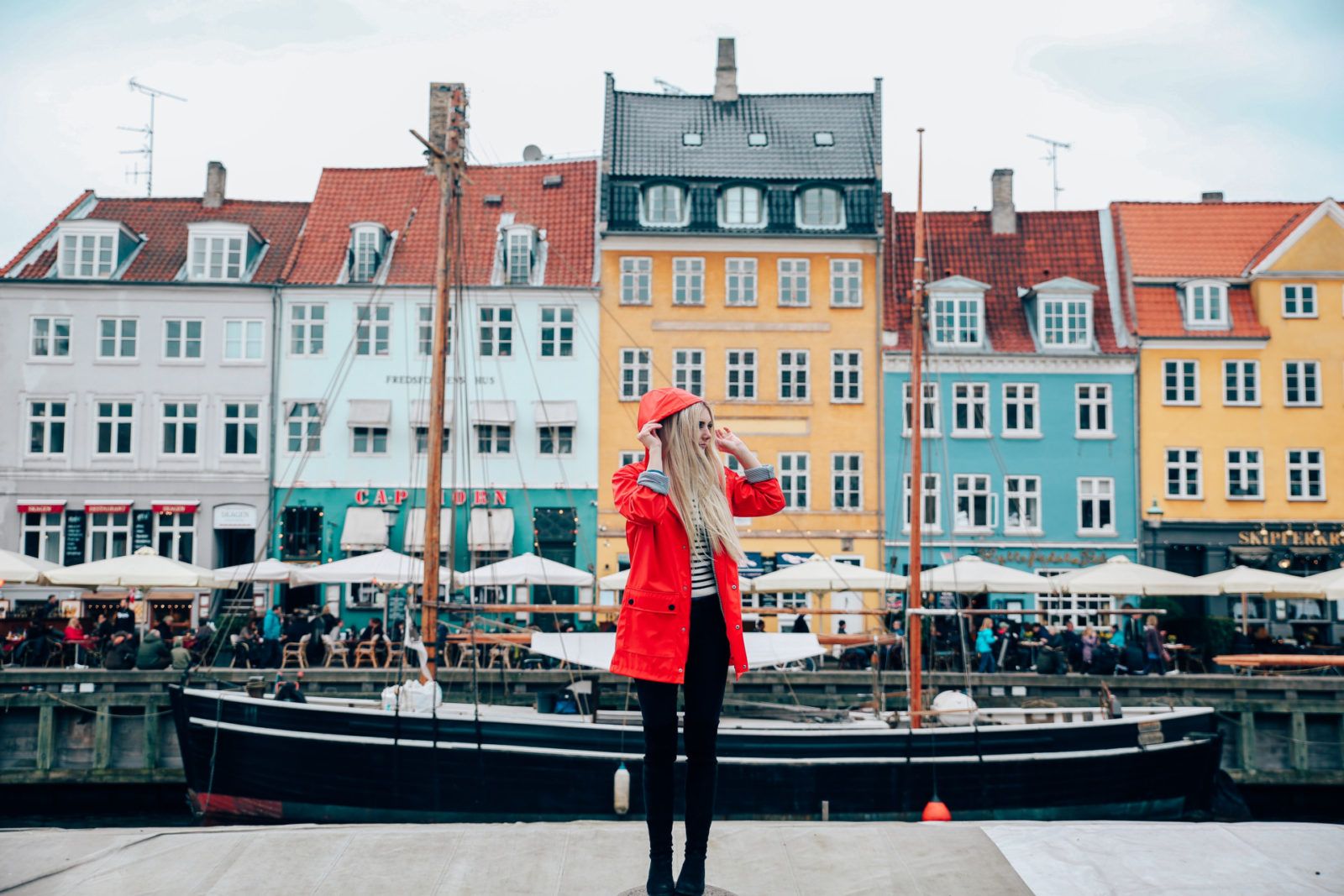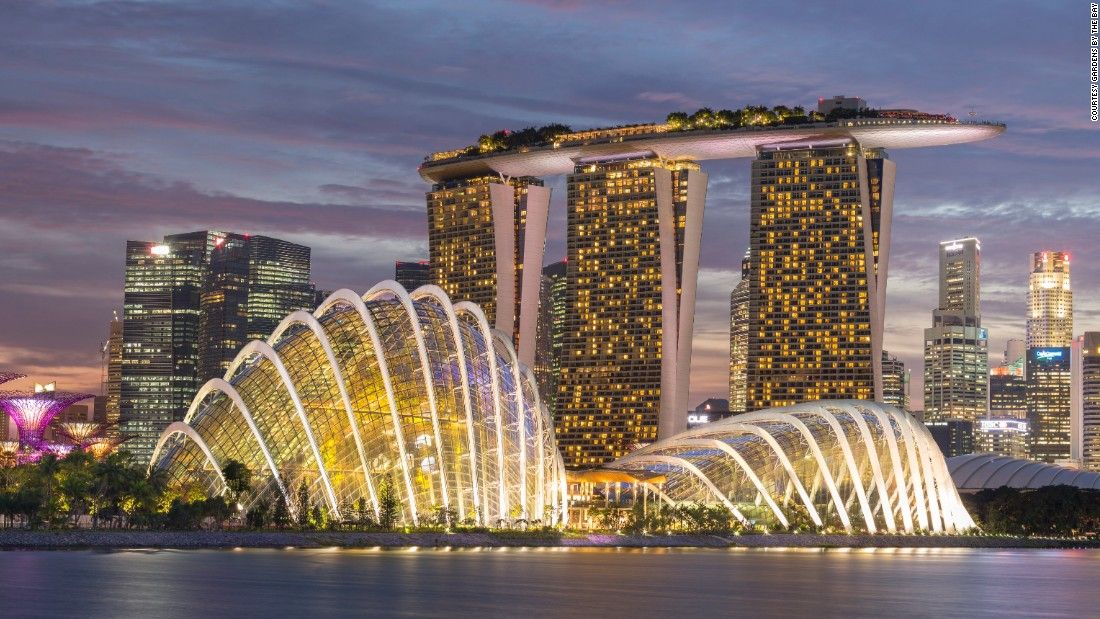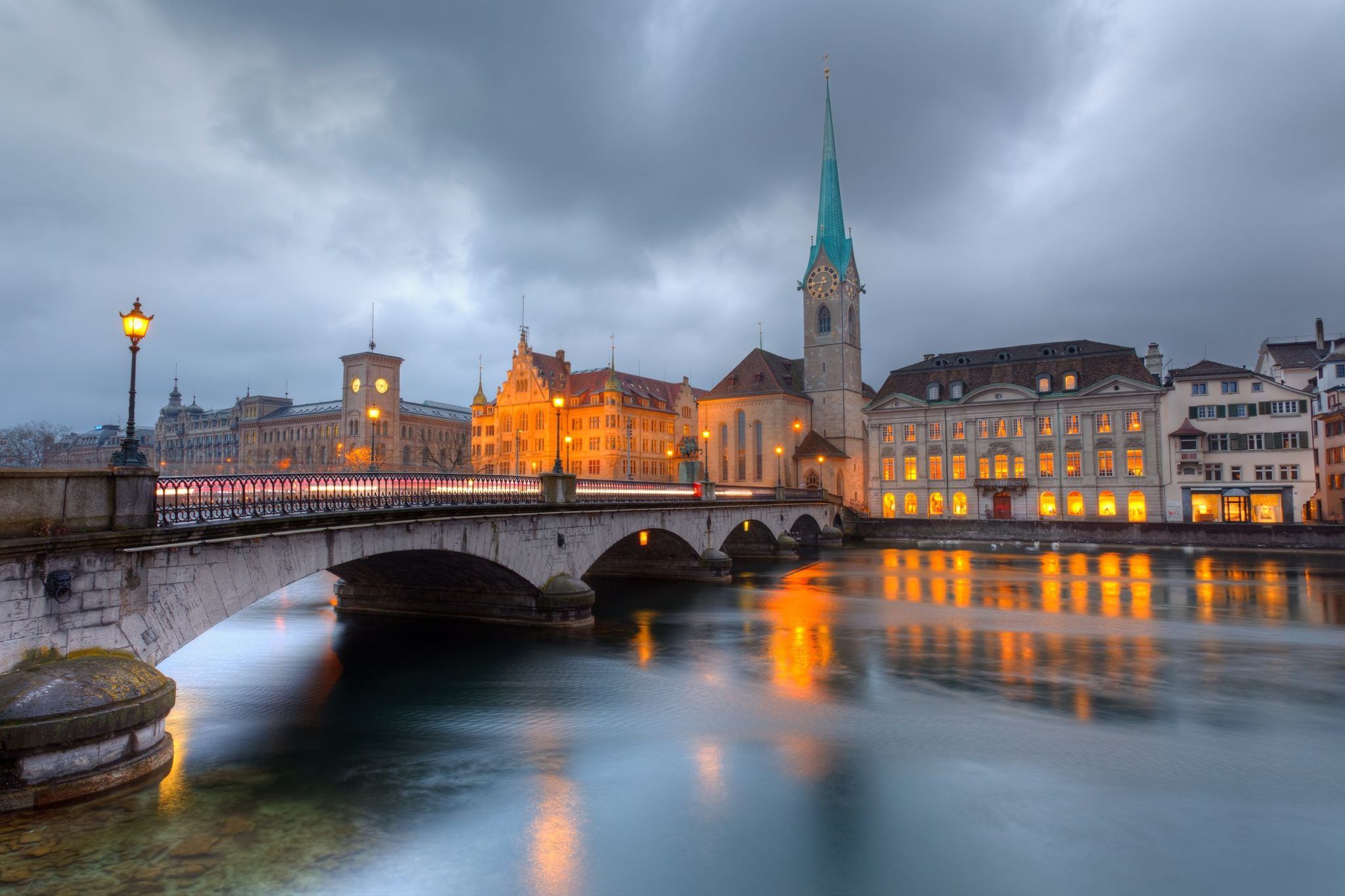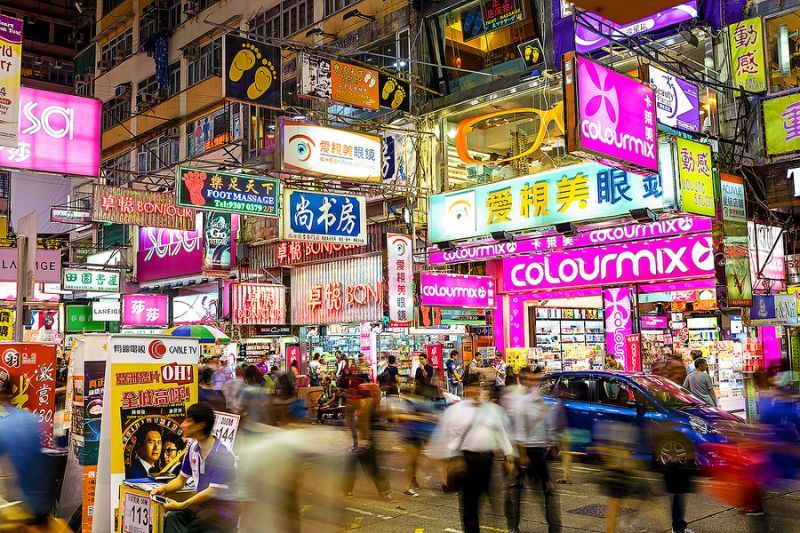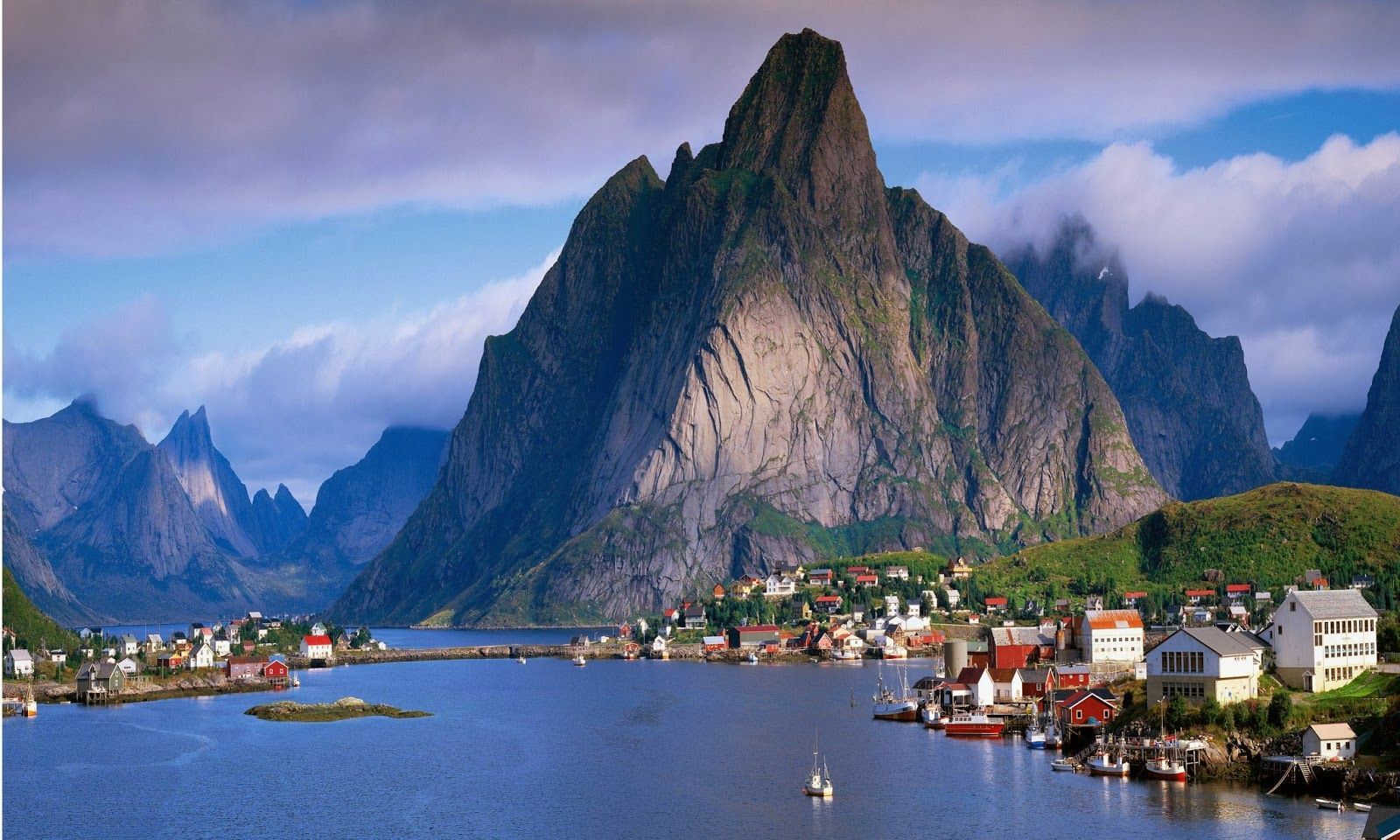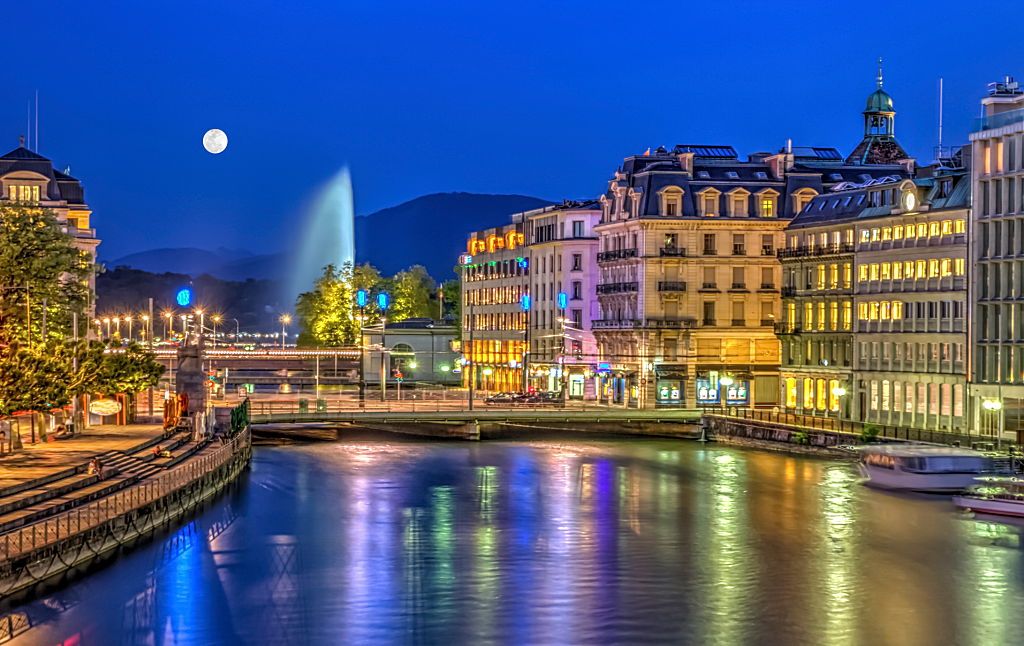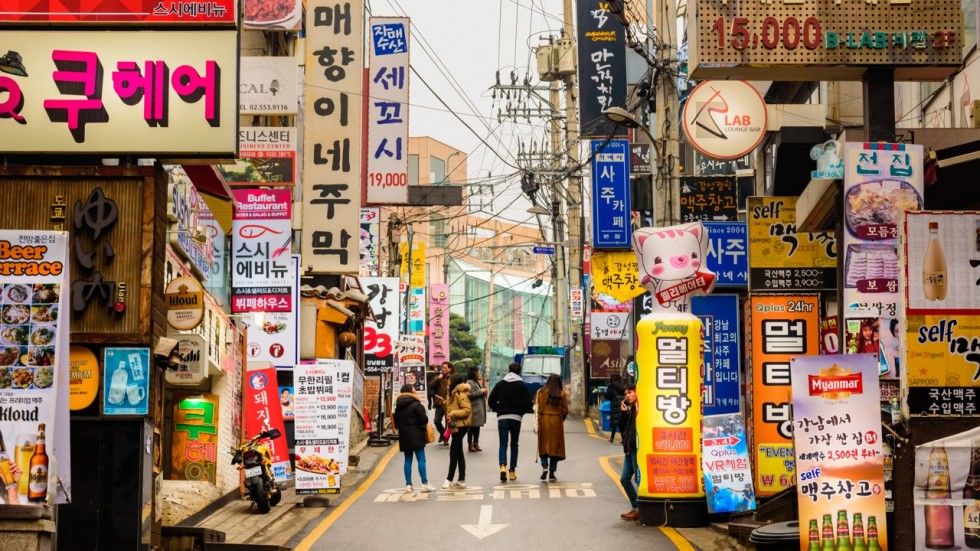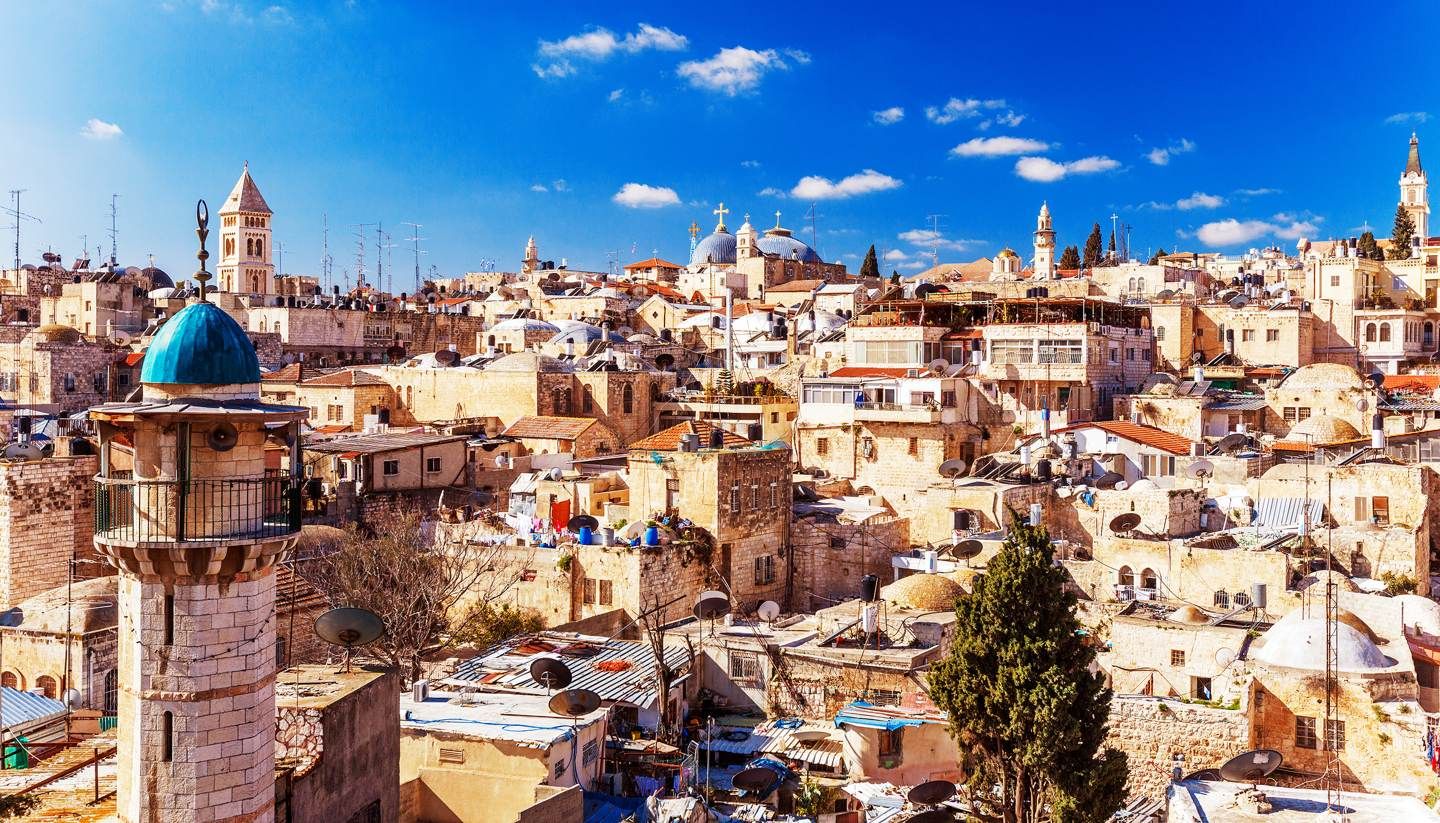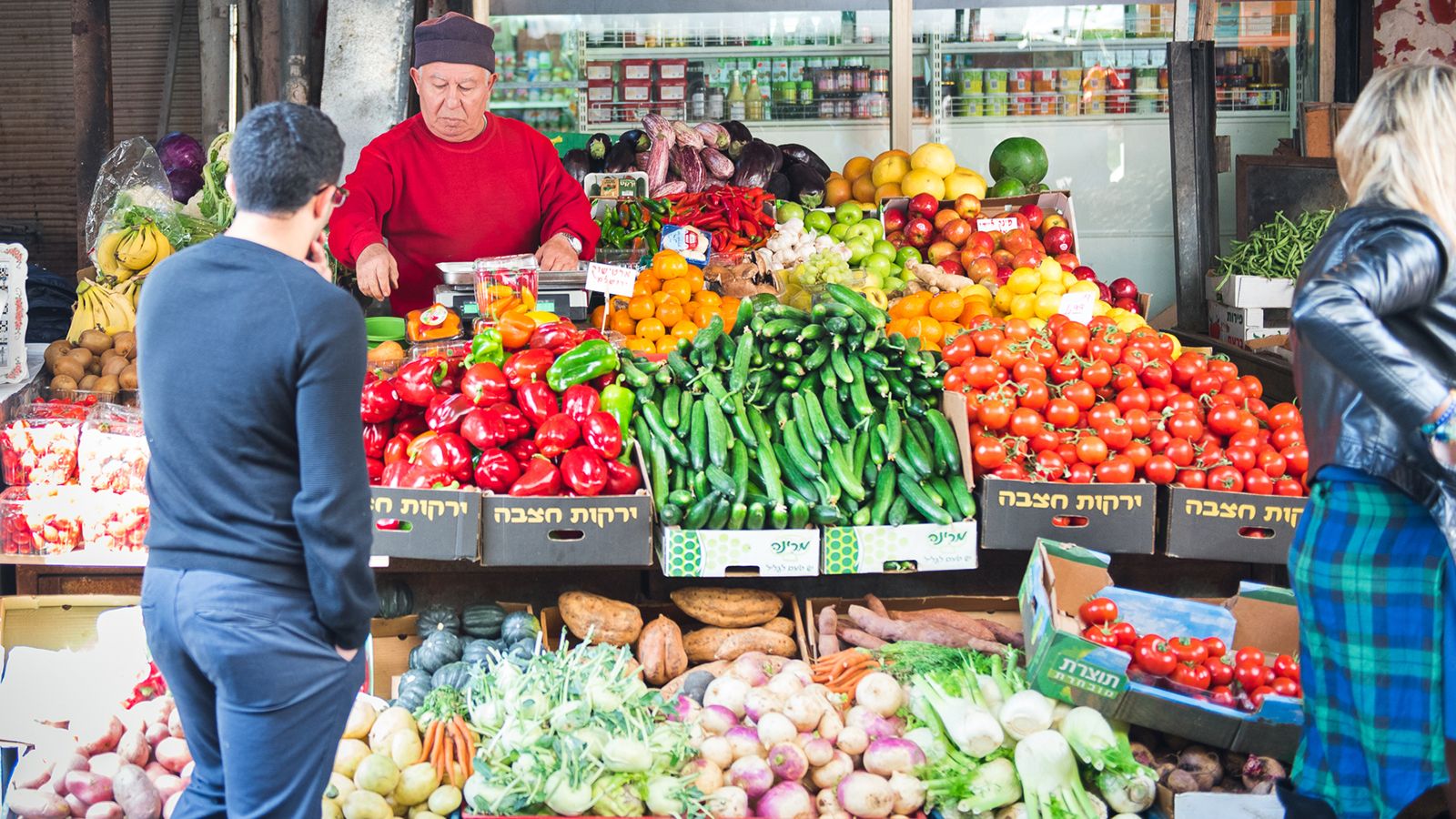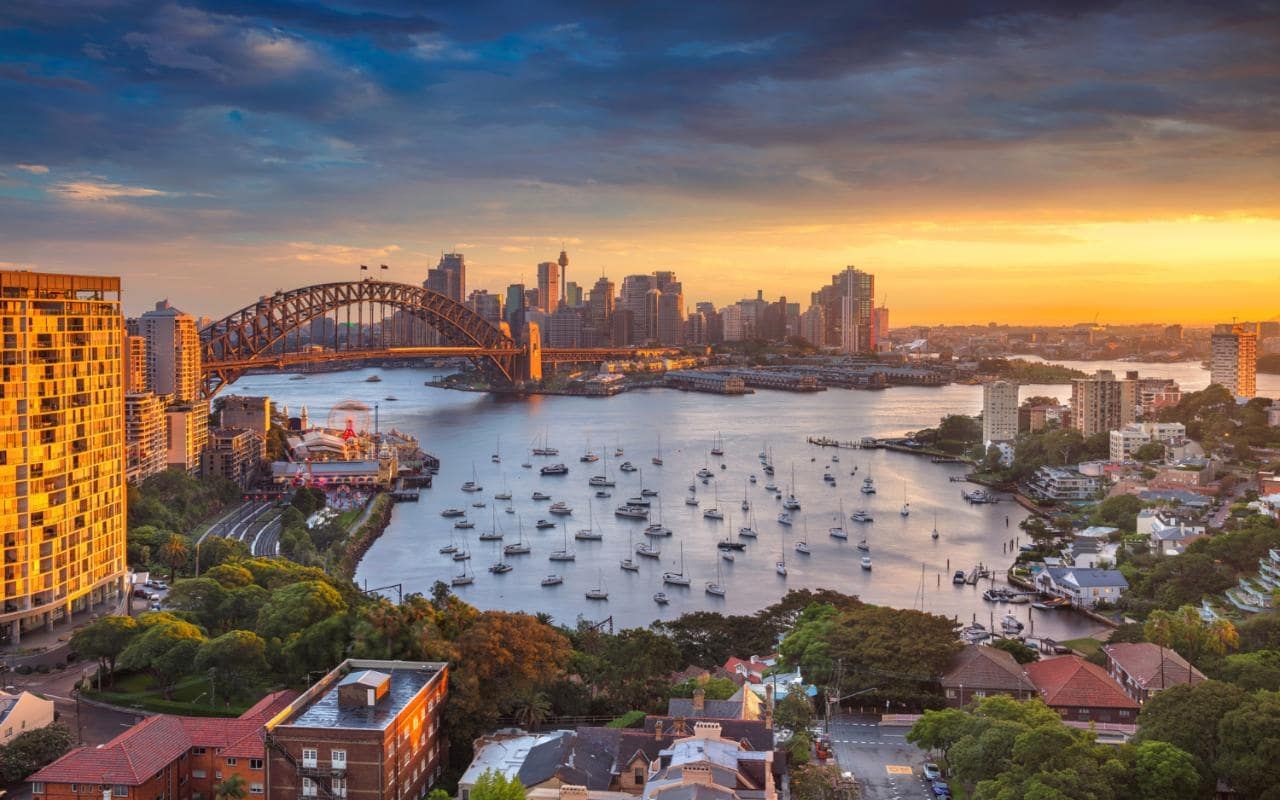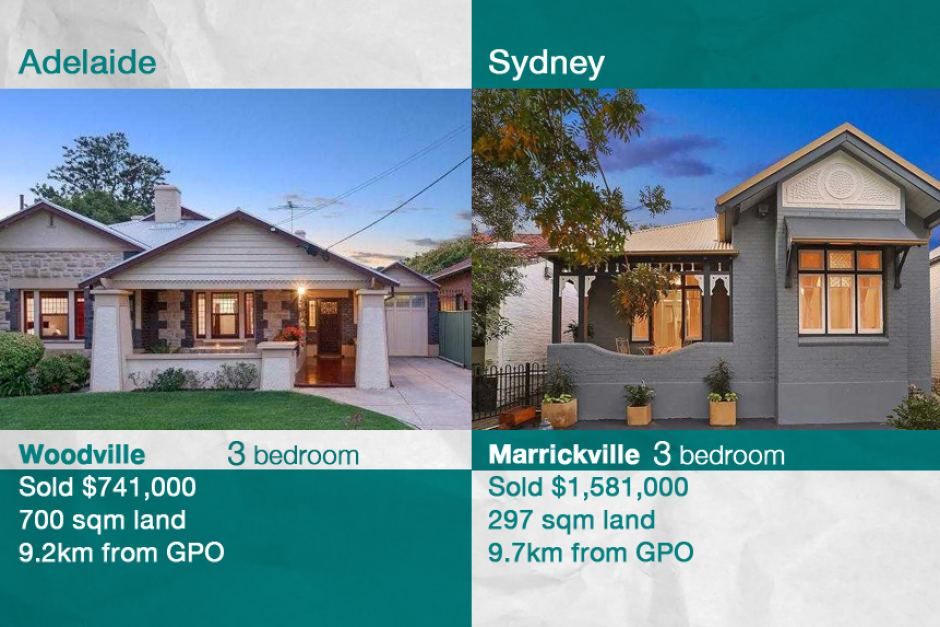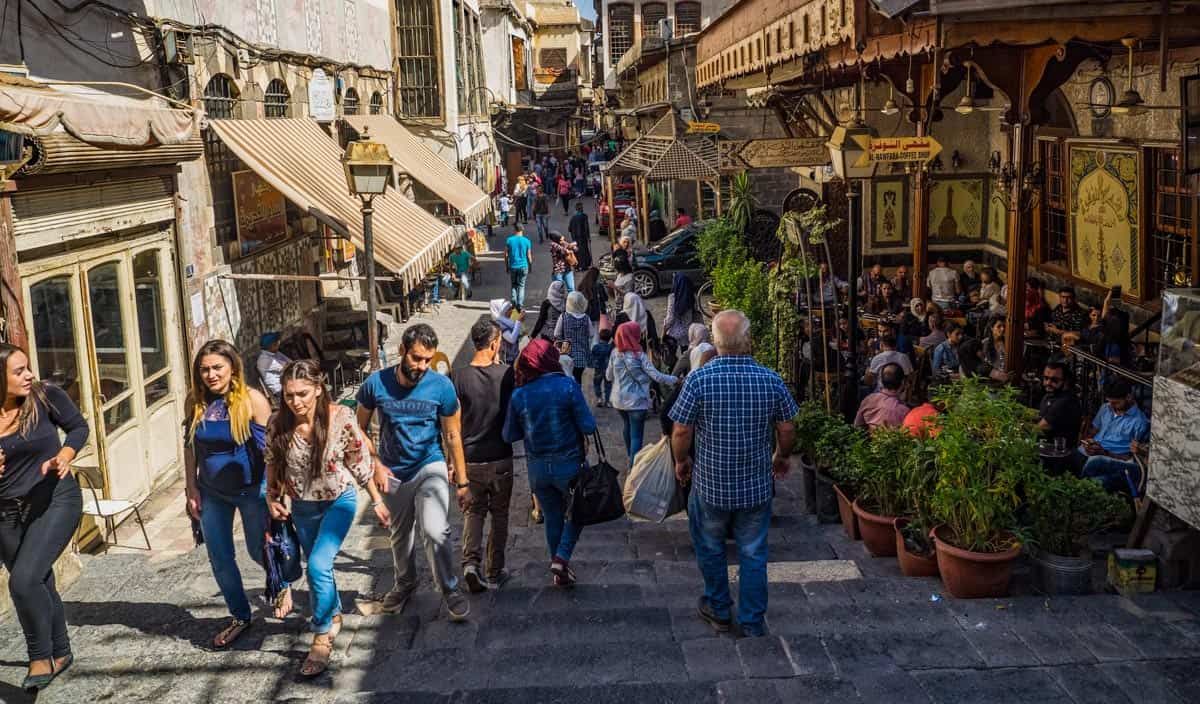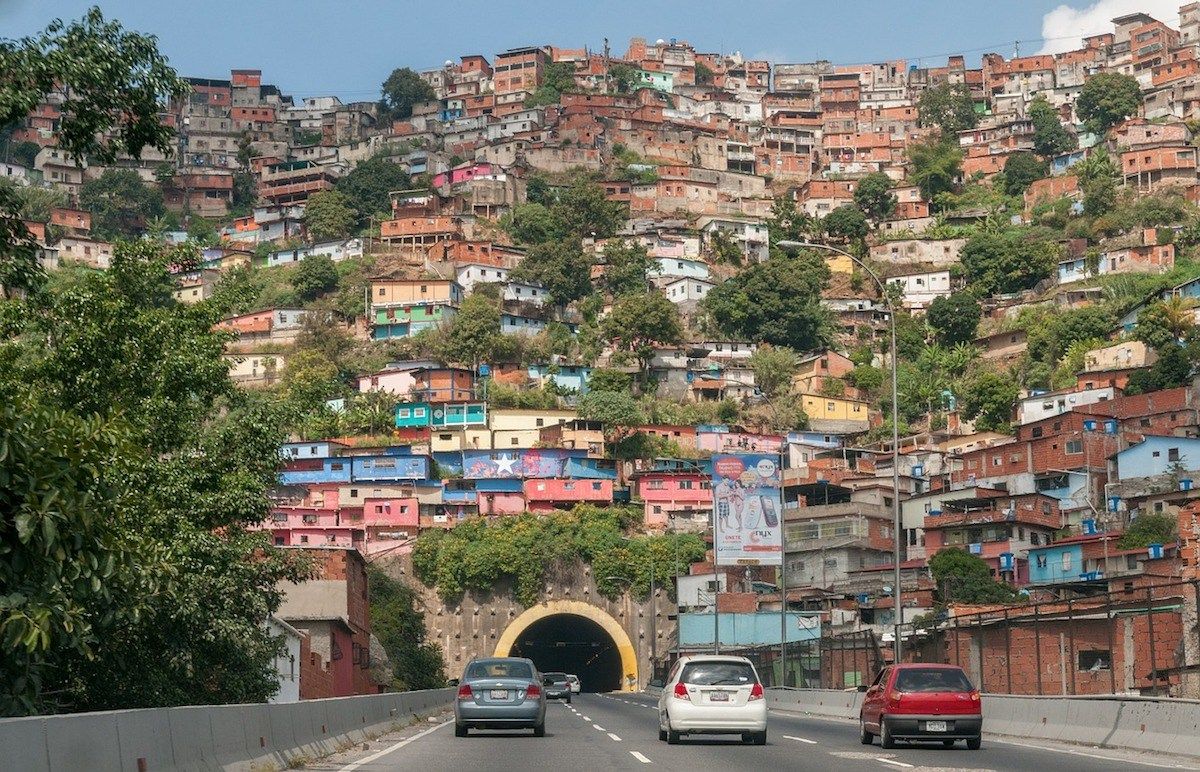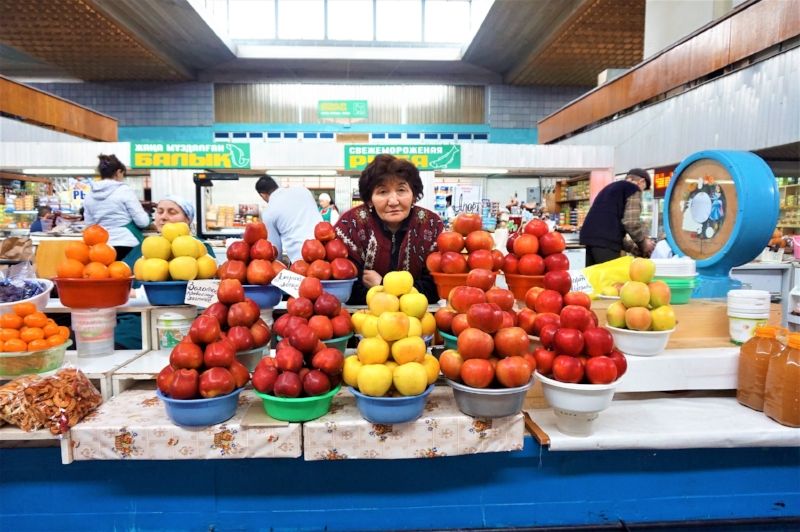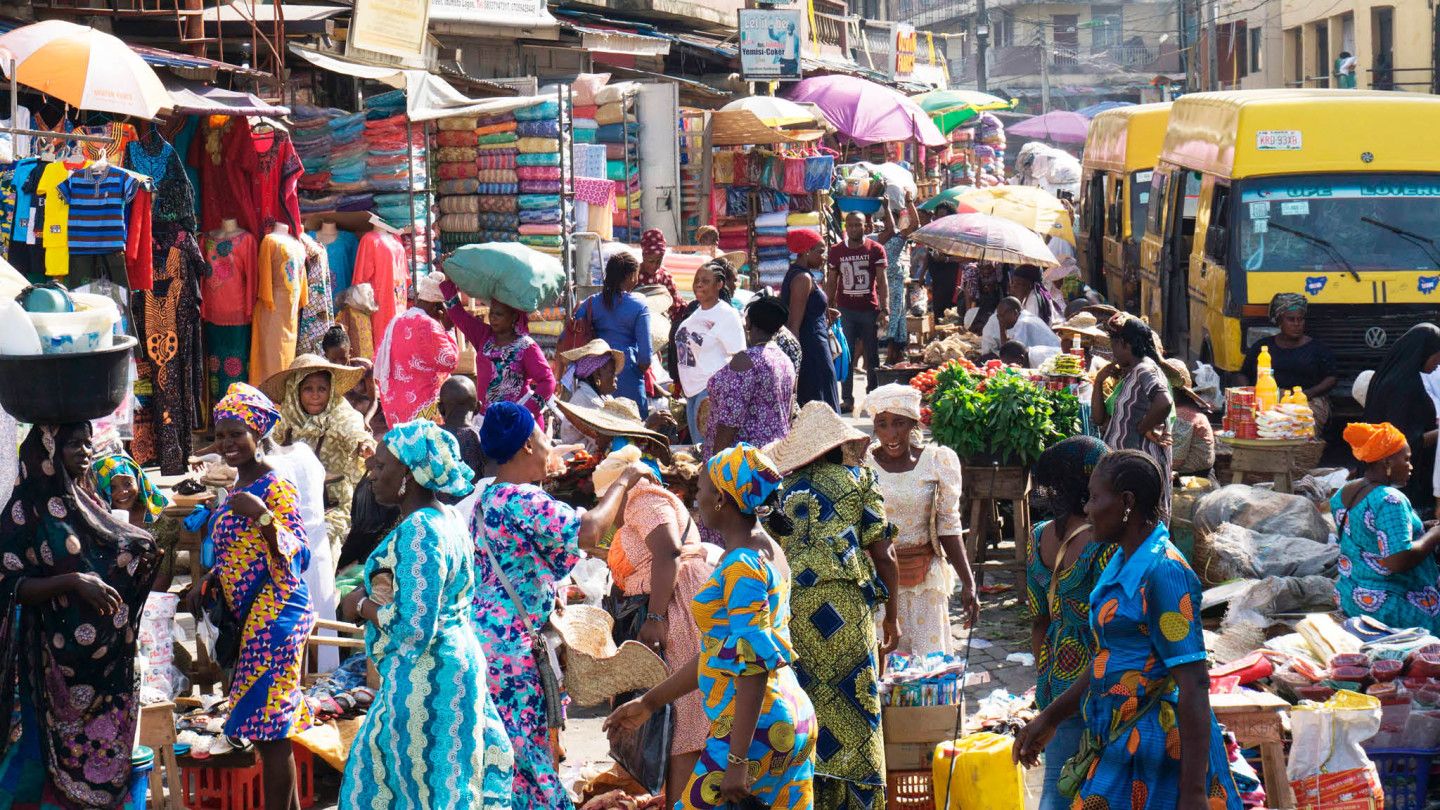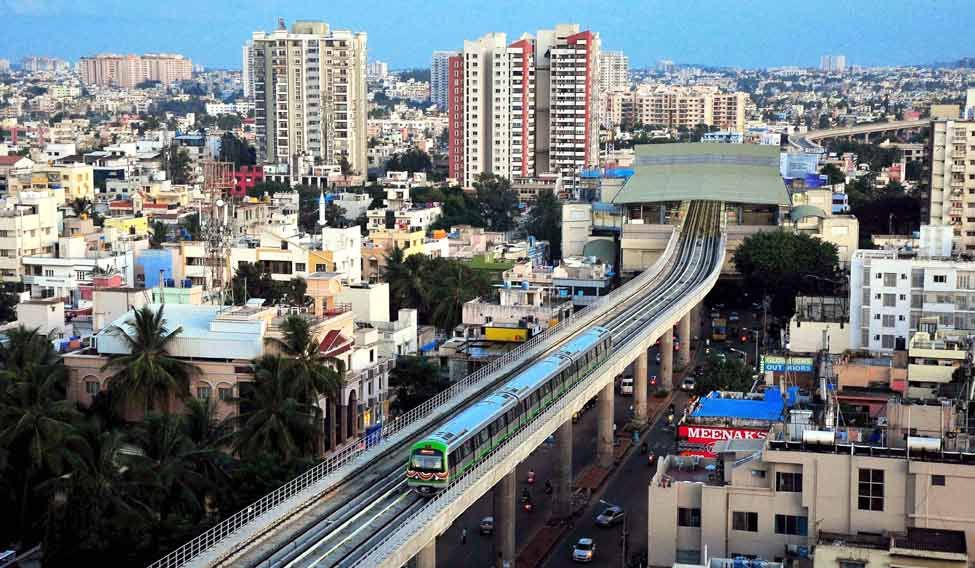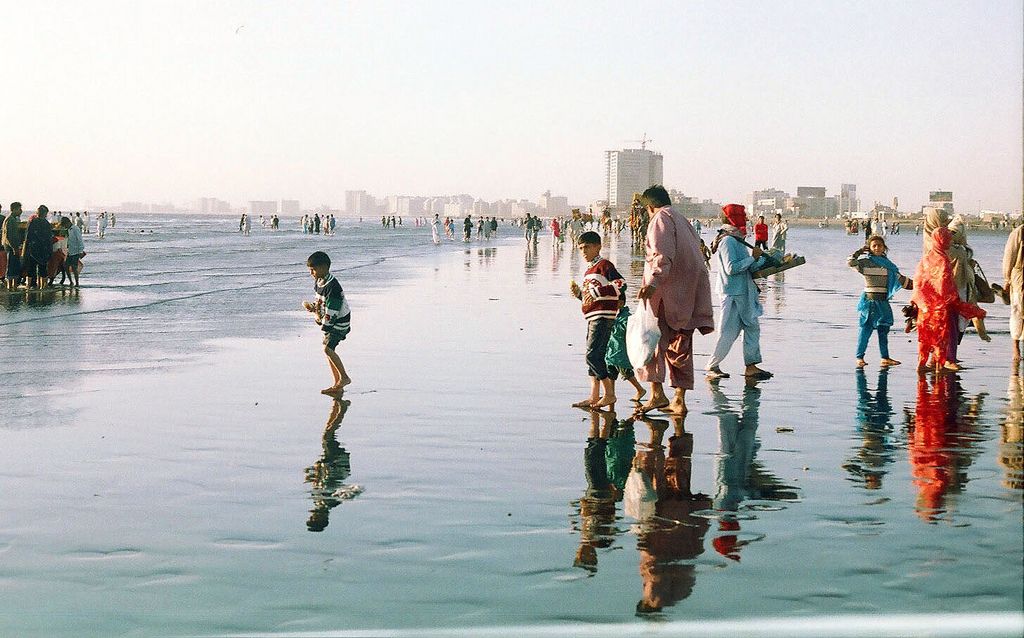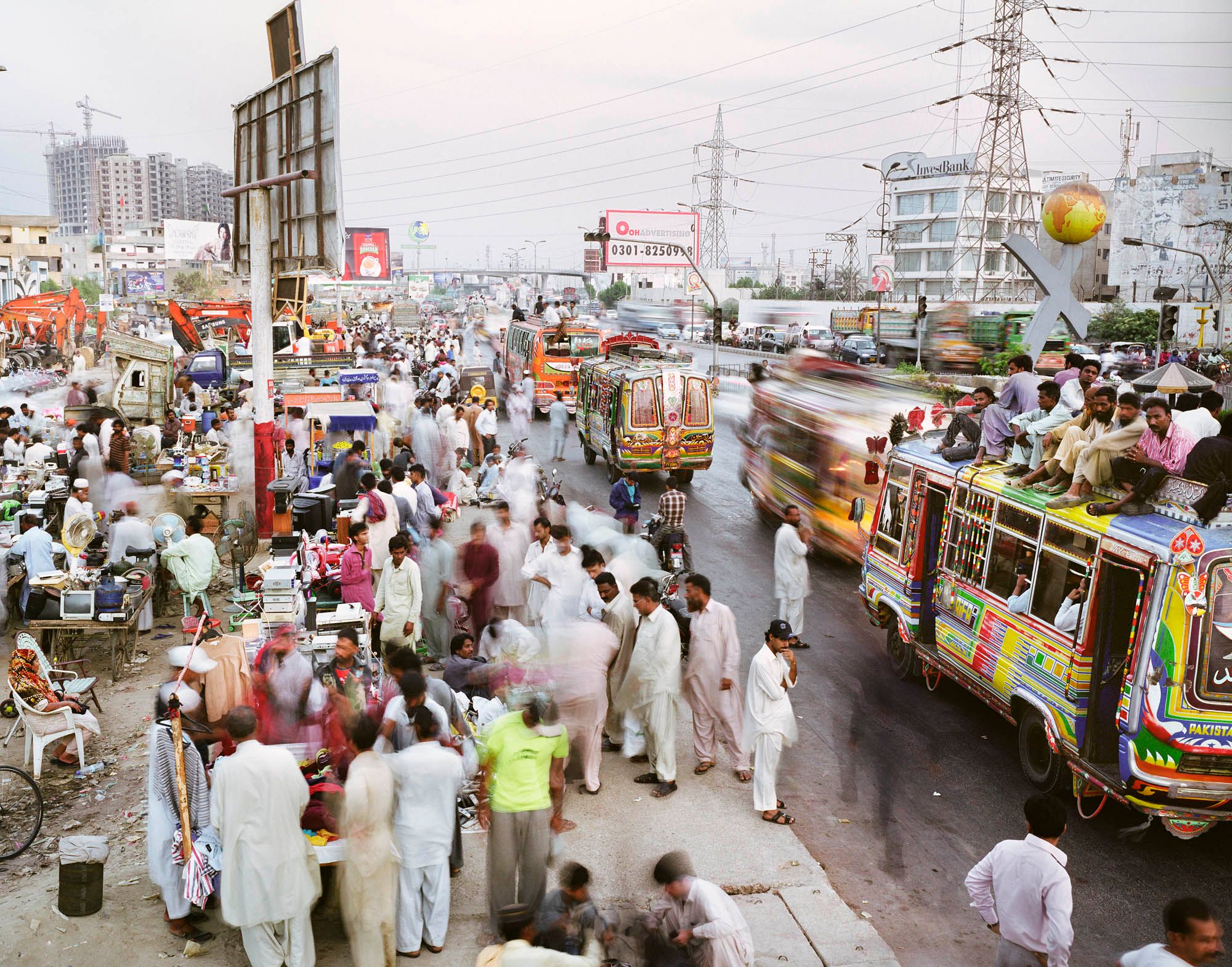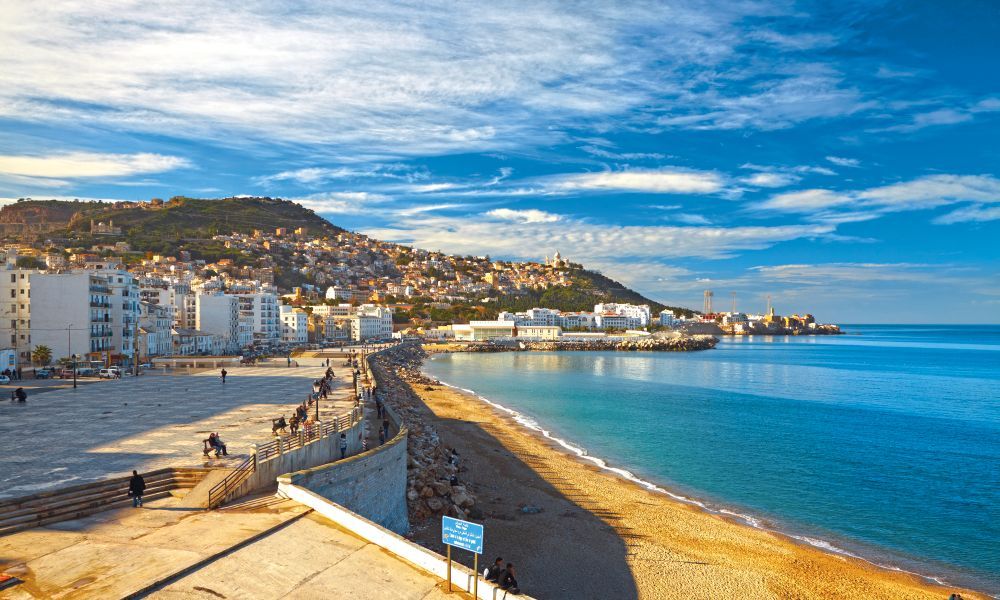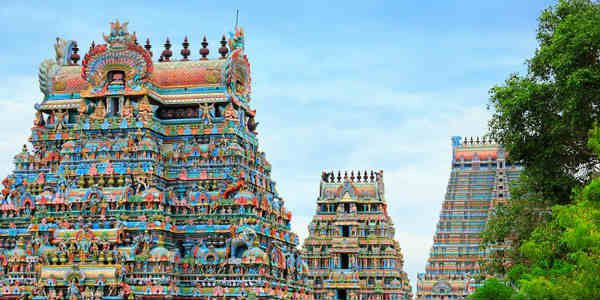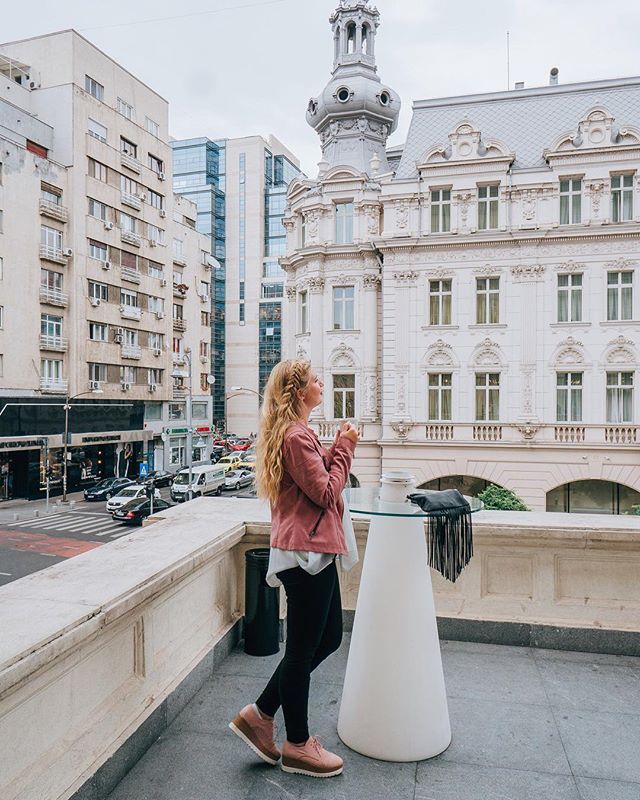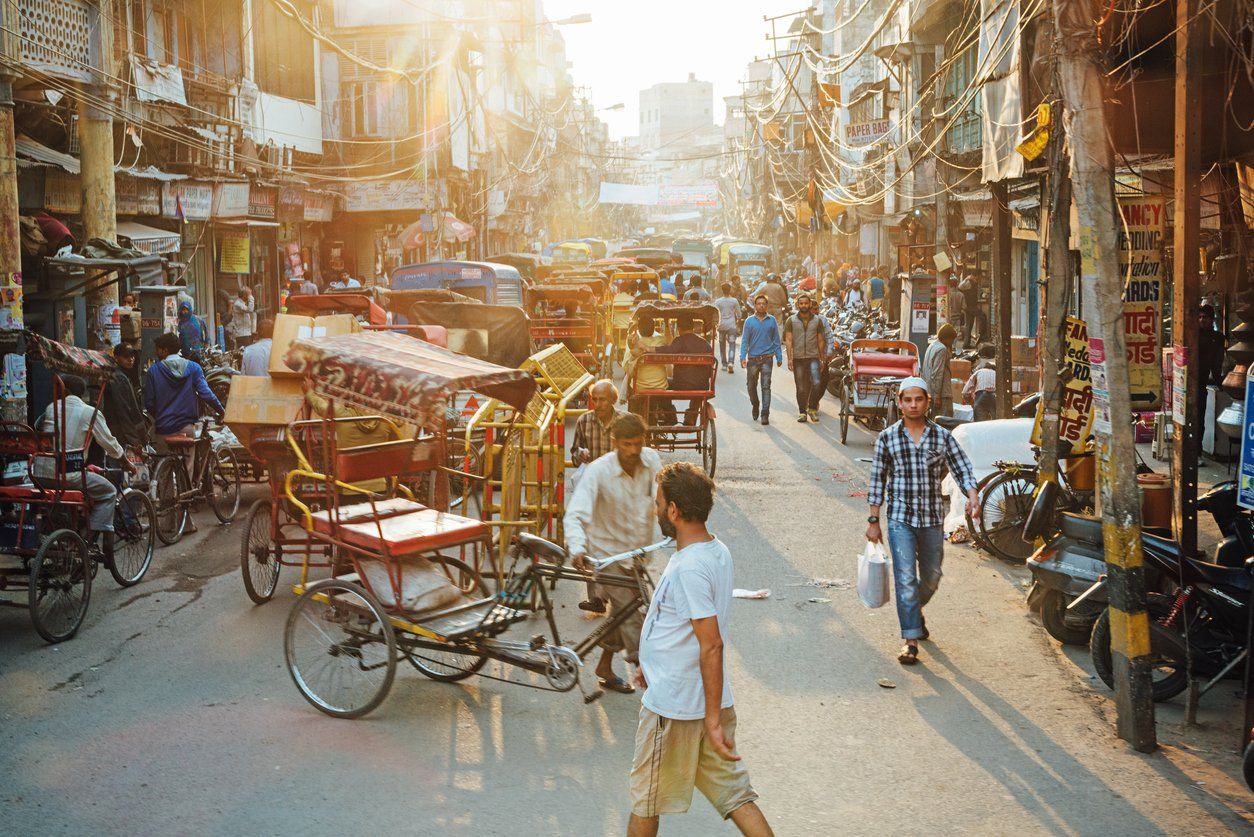Aside from the obvious allure of a commercial attraction, a historical site, or a city’s inherent culture, there is one big factor travelers must always consider when deciding on a place to go to: money. Financial decisions make up a big chunk of the proverbial pie that we’re allotted on a daily basis. It becomes an even bigger chunk when trying to decide where to live.
Every year, there are multiple surveys and rankings of the most and least expensive cities around the world. Some measure the cost of travel to a city or region on either a high-end or shoestring budget, while others look at property prices alone.
But one specific report is interesting because it includes a wide-ranging list of factors–which paints a truer representation of what it's like to work and live in a city. The Economist Intelligence Unit’s Worldwide Cost of Living Report is based on a survey of 400 individual prices across 160 products and services in cities worldwide, including rent, food, drink, clothing, household and personal care items, transportation, utility bills, schools, and recreational costs. Here are 10 of the most expensive cities to live in and 10 of the cheapest.
20 Singapore - Most expensive city for the fifth straight year
The island city-state of Singapore is located off southern Malaysia and has been dubbed the most expensive city to live in for the fifth straight year, according to the EIU’s annual ranking. The economic powerhouse frequently tops various surveys for costliest places to live in the world, as well as being counted as one of the richest countries.
Because of its government’s openness to international investment, Singapore has secured its place as Southeast Asia’s financial centre. But international companies have often had to expatriate expensive foreigners to fill Singapore’s small domestic talent pool. The influx of foreign nationals has pushed demand for accommodation in an overcrowded island, and even though Singapore is now trying to limit the number of foreign workers, it’s still highly regarded as one of the best places for expats to work in. This means prices won’t be coming down anytime soon.
Singapore’s diverse cuisine is one of the city’s highlights and one of the main reasons why living here can easily become so expensive. Although meals from hawker centres and street food stalls are pretty cheap, the food scene is so vibrant it would be hard to turn down a nightly romp to find the next best foodie haven. That said, Singapore is also home to world-class fine dining and some of pricey Michelin-starred spots.
19 Paris, France - Luxuriously broke?
No city better exemplifies the idea of luxurious living better than Paris. The French capital is not only known for fashion and art, its cafe culture and high-end gastronomy are also recognized as the best (and most expensive) in the world.
But it’s not just the designer clothes and world class art that puts Paris at the top of the list of most expensive cities to live in. According to the Economist Intelligence Unit’s survey, Paris is pricey in general.
An average 2.2-pound (1 kg) loaf of bread costs $6.33 USD. A single person will need around $1,000 USD for monthly expenses and rent for an apartment in a decent neighbourhood and an average of $2,300 USD a month.
But enjoying life in the City of Lights is not impossible. Locals and seasoned travelers recommend taking advantage of the city’s extensive subway system and museum passes. Here’s an open secret: Lots of museums in Paris are free on the first Sunday of the month, all year round. Dining in hostels (because of their promos), ordering the prix fixe lunch, and eating out during happy hour are just some tips to save some money when out with friends in this city.
18 Zurich, Switzerland - High cost of living in exchange for a happier life
Nestled by Lake Zurich in northern Switzerland, this picturesque city is genuinely cosmopolitan, which may come as a surprise to some. Don’t be fooled by the quaint houses lining its Old Town or the 17th-century architecture—Zurich is always buzzing with events, festivals, and nightlife.
It is also a global hub for banking and finance. Since its vital role as a centre of commerce in the Early Middle Ages and now home to the Swiss National Bank, it has largely stayed as Switzerland’s financial core. Nearly a quarter of the city’s residents work at banks or investment firms, so it’s no wonder why its locals can afford an average price of $9.48 USD for a pack of cigarettes.
Transportation, food and drink, and accommodations are the most expensive here. At least $2,000 USD a month for a one-bedroom apartment is pretty average and so is $1,500 USD on other expenses. As an expat, expect to pay more in taxes, license fees, and insurance premiums. But many would argue that the payoff--which is a higher quality of life-- is worth it. The high cost of living is balanced with high salaries, reliable transportation, a generous healthcare system, and a stable government.
17 Hong Kong - Shopping, shopping, shopping!
This former British colony in southeastern China is not only a global leader in business and trade, it’s proving to come out on top in technology, retail, entertainment, and culinary arts too. To live in the vibrancy of Hong Kong, however, will cost you a pretty penny.
An average bottle of table wine will cost you $16.16 USD in this city so if you’re on a tight budget, it’s best if you opt for the homestyle cooking of hawkers on the street. Hong Kong is the fourth-most densely populated area in the world, which is unfortunate if you consider getting around in a car essential. Getting a vehicle is definitely the more expensive choice, but here’s the good news: Hong Kong has one of the most sophisticated network of transport links that includes various buses, railways, tramways, and ferries.
One of Hong Kong’s biggest draws is its world-class shopping. The city’s mega malls and neon-lit streets are conducive to the success of almost every major international brand that has an outlet here. Although Hong Kong started out with a reputation for being a bargain hunter’s paradise, most notably in the famed markets of Mongkok, the city is now a place where you can conveniently get bespoke clothing and the most coveted designer collections.
16 Oslo, Norway - Good health, no wealth
At the northernmost head of the Oslofjord sits Oslo, the capital of Norway. It is the country’s most populous city and its centre for trade, banking, a booming maritime industry, and government services.
It is known for prestigious institutions, like the Oslo Opera House and the Munch Museum, which have helped propel Norway onto the global stage as a culture shaper. But you don’t have to be a theatre-goer or a lover of fine art to break the bank in Oslo. The city’s growing gastro-scene of independent and hip bistros, breweries, and cafes—while all good and exciting for the curious foodie—could easily drain you of your disposable income if you’re not paying attention.
In 2017, Oslo was the most expensive city in the world to buy a pint of beer, according to a Deutsche Bank report. A one-bedroom apartment in the city’s centre could easily set a single person back $1,900 USD while another $1,300 USD is needed for other expenses.
But like Switzerland, this European city’s high cost of living is not for nothing. Norway heavily taxes its citizens but boasts a strong public healthcare system and various social programs. It is also regarded as one of the most sustainable countries in the world.
15 Geneva, Switzerland - This city attracts top diplomats, wealthy bankers, and execs
Geneva, a city often mistaken for Switzerland’s capital, lies at the southern tip of Lac Léman and is surrounded by alpine mountains from all sides. As the gateway to the world’s top ski slopes and the European headquarters for the European Union, the city welcomes many wealthy travelers, world diplomats, and business executives on any given day of the year.
One of the main factors that drives the cost of living for Geneva is the price of accommodation, especially in the city proper. The average cost of renting an apartment in the city is higher than in Paris and twice as much in Brussels. Renting a house costs twice as much as an apartment. And that’s just the rental market. Imagine having to actually shell out a deposit to buy a property here.
Some opt to live outside the centre to avoid this, but locals in Geneva also enjoy higher take-home pay. So while it doesn’t necessarily justify the sky high property prices, many locals are used to paying those amounts because they can afford it. The price of insurance, food, and service fees are also typically high here. While haggling is not a customary thing in Switzerland, people who live and work in Geneva are used to taking advantage of loyalty programs and special offers during seasonal sales.
14 Seoul, South Korea - K-pop fever is helping drive the economy
Similar to other metropolitan cities in Asia, Seoul embodies the perfect combination of frenetic energy in its high-tech trains, skyscrapers, and night markets with somber history in its Buddhist temples, palaces, and heritage sites. The recent global fascination with Korean pop culture (usually called K-pop), particularly K-pop music has transformed Seoul into one of the must-visited destinations for millennials.
Housing in Seoul is far more expensive than in other parts of South Korea, and is partly why the city is a recurring member of lists of the most expensive places to live. One particular area of the city is notorious for even higher than usual housing prices: Gangnam. The district is known for its luxurious restaurants, towering condos, and nightclubs that employ international DJs.
The city’s penchant for lavish and out-of-the-box entertainment experiences is also one of the reasons why this city can be so expensive to live in. The booking experience at Seoul nightclubs is a unique (and costly!) form of speed dating. The clubs attract the gamut of customers who have the money to spend on the possibility of meeting someone from the opposite sex, from wealthy expats and financiers to everyday office workers.
13 Copenhagen, Denmark - 7 months' rent up front?!
Like many world-class Scandinavian capitals, you’ll want for nothing in the beautiful city of Copenhagen. It’s not only home to palaces, 18th-century architecture, and the famous Tivoli Gardens amusement park, but also a rich baking history and all the modern amenities you’ll need.
Food and basic necessities are not as expensive here, but housing definitely is. An average one-bedroom apartment will set you back around $2,000 USD and monthly expenses without rent can cost around $1,000 USD. One of the surprise housing costs that is typical across the city is the expected deposit on rentals.
Many landlords require three months’ worth of prepaid rent plus another three months’ rent to cover the last months of your lease. This typically does not include your first month’s rent. This means, renters are looking at paying seven months rent up front! That is a staggering amount of money to dole out at once.
Traveling by car is also very expensive in Copenhagen. The city was designed for travel by bike and many locals will often bike everywhere all year round. The good news is the city’s street networks and alleyways are designed perfectly for bike-riding.
12 Tel Aviv, Israel - Pack a lunch everywhere
Tel Aviv, Israel’s second-most populous city next to Jerusalem, is situated on the country’s Mediterranean coast. Unlike Israel’s capital, Tel Aviv is less somber and more modern. Museums like Beit Hatfutsot showcasing Jewish culture draws an international and interfaith crowd; while restaurants for the burgeoning palettes of visitors and locals alike are opening in every corner of the city.
The cost of fresh produce sold at markets are usually affordable, but going out for a meal or a drink in this city can get pretty pricey. The average price for a bottle of wine is $28.77 USD. It’s a cheaper option to shop from local vendors and cook meals at home, especially if you’re a good negotiator. Haggling is the norm in Israel, so you can potentially nab a good deal along with the added bonus of taking home fresh produce.
Car ownership is extremely expensive in Tel Aviv, because it’s necessary to pay typically 90 percent tax on a vehicle. Petrol is also a contributing factor. The average cost of 1-liter unleaded petrol/gasoline is $1.68 USD, according to the Economist Intelligence Unit report. The price of taxis is still relatively expensive, but can be a good choice when travelling with two or more people. The cost for entertainment like tickets to the movies and concerts are also usually expensive in Tel Aviv.
11 Sydney, Australia - Property prices are too high
One of Australia’s largest cities, Sydney is most known for its harbourfront Sydney Opera House with the unmistakable sail design. Its location by the water and proximity to other natural adventure spots like the Blue Mountains makes it an ideal city for nature and city lovers alike. Sydney also boasts a thriving shopping district and emerging restaurant scene.
Monthly expenses for a single person here are usually $961 USD plus an average of $2,000 for rent in a one-bedroom apartment. This is considerably more than in any other Australian city. Buying property in Sydney is next to impossible, if you don’t want to end up house poor at the end of handing in that cheque for a giant deposit.
Australia was ranked the third most unaffordable place to buy property in the International Housing Affordability Survey of 2016. But the government is starting to crack down on wealthy foreign buyers who have driven up home prices in the recent years.
One-way transport tickets may not be the cheapest, but many locals choose to take the train instead of getting stuck in traffic. The added cost of road tolls, high insurance and petrol price are the main reasons why it’s expensive to own a car in the city.
Sydney is the most expensive city in Australia and, according to the Economist Intelligence Unit, the tenth most expensive in the world.
And now for the 10 cheapest cities to live in:
10 Damascus, Syria (Cheapest) - Conflict has taken a toll on Syrian pound
Damascus is one of the oldest cities in the Middle East. Established in the 3rd millennium B.C., it is the modern day capital of the Syrian Arab Republic. It is locally known in Syria as ash-Sham and titled the City of Jasmine.
While largely spared from the Syrian civil war, the city’s outskirts has seen its fair share of turmoil. Some have likened it to West Berlin surrounded by East Germany during the Cold War: (relatively) normal and markets still abuzz. But the civil war has taken a huge toll on the Syrian pound, so even though basic amenities may seem cheap to an expat or visitor, to the average Syrian that may not be the case.
In Damascus, an average 2.2-pound (1 kg) loaf of bread only costs $0.60 USD, a bottle of table wine is $3.35 USD, and a 1-liter unleaded petrol/gasoline is $0.50 USD.
Transportation via small buses is the main way to get around Damascus. All travel within the city only costs about 20 cents USD, and to get from A to B only takes at most a couple journeys.
9 Caracas, Venezuela (Cheapest) - Situation is bleak due to hyperinflation
Caracas is Venezuela’s capital and the country’s commercial and cultural hub. Once known as the Paris of South America in the 1950s for its then-booming resource industry and fast-growing innovation, the city has never really recovered from the collapse of oil prices and the economic crisis that followed in the 1980s.
Cigarettes here are only $0.69 USD a pack while a loaf of bread on average goes for $2.25 USD. But the “cheap” prices are a bit misleading, as the country has been suffering from hyperinflation and a sharp shortage of basic goods in recent years. While prices may look cheap in theory from the perspective of an outsider peering in, for Venezuelans who are dealing with a near-collapsed currency, the situation is bleak.
The same goes for housing. The real estate market has been a major sor spot for ordinary Venezuelans. While average property prices may look enticing to a foreign buyer, they are still significantly unaffordable for people who primarily live and work in Caracas. Efforts are underway to alleviate the burden of unaffordable accommodation costs, especially in the densely populated parts of the city, but there’s still a long way to go.
8 Almaty, Kazakhstan (Cheapest) - The underrated (cheap) gem of Central Asia
Up until 1997, Almaty served as Kazakhstan’s capital. But to this day, the Central Asian city remains as the country’s centre for trade, culture, and commerce. At the Central State Museum, you'll find thousands of historic artifacts. If you take a stroll and explore the leafy city, you’ll find the yellow towers of Zenkov Cathedral, a tsarist-era Russian Orthodox church.
Food, especially fruits and vegetables—when bought in season and at local markets—can be very cheap in Almaty. But during winter time, the prices spike for produce like tomatoes and potatoes. The native Kazakh diet relied heavily on soups and meat during the coldest months. While the price of fresh produce fluctuate between seasons, basic necessities remain relatively affordable. he average price of a 2.2-pound (1 kg) loaf of bread is $1.02 USD.
Kazakhstan has, in recent years, enjoyed some time in the spotlight thanks to the film Borat. In Almaty, there is a rising middle class and they are ushering in a new wave of Western-style cafes, nightclubs, and ski resorts. But for the large part, the city remains relatively cheap, especially for expats and backpackers from Europe or the Americas.
7 Lagos, Nigeria (Cheapest) - Won't be long before prices spike
Nigeria’s largest and most populous city is also the most populous on the African continent. The mega city is not only a key financial centre in Africa, it also has one of the largest and busiest trading ports on the continent. It is also home to many beach resorts, boutiques and clubs.
As one of the world’s fast-growing metropolises, it has its fair share of poverty and infrastructure problems. Transport in particular is a huge issue. Roads are often congested and it’s hard to get around the city’s network of islands without a car. Good news is the cost of 1-liter unleaded petrol/gasoline is $0.40 USD and the average price of a taxi starts at $0.83 USD per kilometre. For a rapidly growing city, housing prices are not as inflated as you may think. For a furnished two-bedroom apartment in the city, one can expect to shell out around $2,000 USD.
The city is in the midst of a transformation. Whether it’s in the tech startup industry, transportation, or nightlife, Lagos is becoming a city where businesses and travelers alike will soon flock to. It probably won’t be long until the cost of living in the city will spike.
6 Bangalore, India (Cheapest) - Where high-tech and the royal past combine
Bengaluru, also called Bangalore, is the centre of India’s high-tech industry. It is one of India’s most progressive cities, with a vibrant nightlife scene and beautiful green spaces. Aside from its modern offerings, it is still home to grand royal Indian residences, like the 19th-century Bangalore Palace and Tipu Sultan’s Summer Palace from the 18th century.
One if the city’s highlights is its wide array of products, available at a bargain, usually sold in eccentric trucks parked on sidewalks or nearby marketplaces. Find anything from paintings, clothing, and small knick knacks – but always be ready to haggle.
While Bengaluru has seen an upswing in its property market, many everyday purchases–like food, drink, transportation–are affordable. And even with an uptick in housing demand, rentals in the city remain cheap. Monthly rent for an apartment in an expensive area of the city will only run you approximately $300 to $400 USD. The average cost of a 2.2-pound (1 kg) loaf of bread: is $1.33 USD; $16.42 USD for a bottle of wine; and $1.15 USD for 1-liter of unleaded petrol/gasoline.
5 Karachi, Pakistan (Cheapest) - The Other City that Never Sleeps
The busy city of Karachi is located on the coast of the Arabian Sea. It houses Pakistan’s largest port and acts as the financial and trading centre of the country. It is often referred to as the City of Lights, the City of The Quaid, and like New York City: the City that Never Sleeps. Like its western counterpart, Karachi is busy and non-stop.
Although it's a fast developing city, it has a recurring position on the list of least expensive cities to live in. The average cost of a 2.2-pound (1 kg) loaf of bread is $1.70 USD and only $0.68 USD for 1-liter of unleaded petrol/gasoline. A one-bedroom apartment in the centre of the bustling city will only set you back $175 to $200 USD.
As for transportation, the city is not very conducive to walking due to unreliable road signs and undeveloped walkways. Riding the bus is the most common way for people to get around and one of the cheapest options.
Expat workers who work in multinational companies in the city like IBM and Chevron, and receiving high salaries reap the rewards of the low cost of living. The city has credited its growth to economic and political migrants alike, which is contributing to its growing diversity.
4 Algiers, Algeria (Cheapest) - Low prices, low quality of life
Algeria’s capital city is known for its Ottoman palaces and white walls of the Kasbah. The North African city is located on the country’s Mediterranean coast and an important trading port in the region. All major roadways in Algeria begin and end here, so rest assured, if all else fails for you navigationally. Algiers is known locally as El-Djazaïr and the residents speak Berber, Arabic and French.
The city, marred by violence in the past, has undergone a rapid industrialization and innovation period. But even though the city centre looks modern, the surrounding districts of the city is still trying to play catch up. The quality of life remains low for many locals and prices for products and services remain low.
Transportation in and around the city is inefficient and poorly designed but a number of projects are underway to improve the country’s infrastructure. The old part of the city, known as the Kasbah or Medina, boasts elegant villas and many old French buildings.
The average cost of a 2.2-pound (1 kg) loaf of bread is $2.07 USD and the cost of a bottle of table wine (750 ml) is $10.20. A one-bedroom apartment in the city is around $180 USD.
3 Chennai, India (Cheapest) - Rich in culture but cheap to live in
Formerly known as Madras, Chennai, is the capital of the state of Tamil Nadu. The city is on the Bay of Bengal in eastern India and is home to many Tamil religious sites like the Kapaleeshwarar Temple, and was once a British military garrison. It has the second longest beachfront of any municipality in the world.
As one of the world’s fastest growing cities, Chennai does not compromise culture for modernity and growth. It continues to celebrate its rich history through art, architecture, and dance. It is India’s sixth most populous city and it is still growing. That said, it remains one of the cleanest metropolitan cities in South Asia.
The combination of its location, growth potential, and rich heritage should make the city an expensive city to live, but it’s not. It costs on average $193 USD to rent a one-bedroom apartment in centre of the city.
A 2.2-pound (1 kg) loaf of bread is $1.20 and a 1-liter of unleaded petrol/gasoline is $1.11. Public transportation via buses is super cheap, with fares typically starting at 4 INR ($0.59 USD) per trip. If you want a more comfortable ride, you can pay a slightly higher price for air conditioned express buses.
2 Bucharest, Romania (Cheapest) - Cheap inside the city and even cheaper on the outside
Bucharest is Romania’s capital and largest city. It is also its centre for finance, trade, and culture. Though it’s usually considered a gateway city into traditionally more alluring regions of Romania like Transylvania, Bucharest has a lot of history, culture, and entertainment to offer too. The city centre is mostly modern-looking, but many parts of the city is still dotted with 17th and 18th-century architecture and art.
Accommodations here are cheap, compared to other countries in the Balkan region. A one-bedroom apartment is about $400 to $500 USD. If you decide to go the even cheaper route, you can rent a flat just outside the city centre for half of that price. The cost of an average 2.2-pound (1 kg) loaf of bread is $2.05 USD while the price of a 1-liter of unleaded petrol/gasoline is $1.28 USD.
Bucharest is a perfect city for the cash-strapped wine lovers, as an average bottle of wine here is only $4.98 USD. That’s almost just as much as a pack of cigarettes here, which costs on average $4.31 USD. The city has a lot of parks as much as it has historic museums, so if you don’t want to pay ticket fees, it’s easy enough to sunbathe or enjoy a drink out on the grass.
1 New Delhi, India (Cheapest) - A few hours from the Taj Mahal
New Delhi, or known colloquially as Delhi, is India’s capital city. It’s home to the country’s government and a centre for entertainment, fashion, and commerce. Many who visit New Delhi don’t stay for too long, usually continuing on to sites like the Taj Mahal a few hours away, but to the locals who live here, the city is a wonderful metropolitan maze with an emerging creative and culinary arts industry.
So why is this city so cheap to live in? The sheer amount of people, the impressive hustle and grit, and the amount of ventures opening up in the city have allowed for service and product prices to remain low. There is no shortage of luxury hotels and world-class restaurants pushing the boundaries of Indian cuisine that are popping up everywhere in the city.
For housing you’ll only need $231.88 USD to live in a one-bedroom apartment at the heart of the city. More than half of the population is dependent on public transportation, so a lot of cheap options abound. The average cost of a 2.2-pound (1 kg) loaf of bread is $1.07; $19.03 USD for a bottle of wine; and $1.07 USD for a 1-liter of unleaded petrol/gasoline.
References: Economist Intelligence Unit, Forbes, CNBC, Swiss Info, CNN Travel, The Guardian

